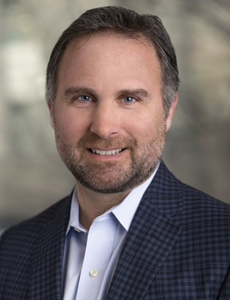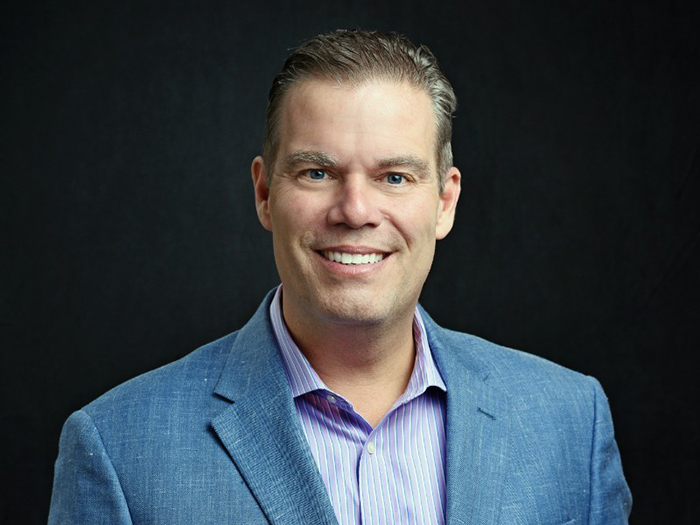5 Predictive Models Revolutionizing Workers’ Comp and Helping Claims Managers Focus on the Human Element of Claims

Predictive claims models have been transforming the ways workers’ compensation professionals do their jobs for a number of years now.
Models can help detect which injured workers are likely to struggle with recovery, allowing claims managers to focus on helping them stay on track. They can also spot fraud and potential compensability issues.
“Analytics and modeling augments the expertise of the claims professionals and allows them to focus on areas where they can have the greatest impact,” said Dave Dwortz, president and CEO, Helmsman Management, Liberty Mutual Insurance’s wholly-owned third party administration unit.
As models continue to become more sophisticated over the coming years, they’ll play an even bigger role in the claims profession.
These tools bring an additional benefit: attracting and retaining claims talent. In today’s intensely competitive labor market, many third-party administrators are investing in data analytics and predictive modeling tools to help streamline workflows and help case managers focus on helping injured workers heal.
“There’s been a ton of innovation in predictive analytics and it’s having a significant impact on the claims profession. The models themselves are making quantum leaps in terms of the data that’s being leveraged to drive the models and the techniques employed to analyze all that data,” Dwortz said.
“This allows the claims professional to intercede at the most impactful time on these claims.”
Here’s a look at some of the predictive modeling tools claims professionals are relying on and how they’re evolving to become more sophisticated while harnessing the human element of claims management.
5 Predictive Models Workers’ Comp Professionals Are Relying On
Dwortz outlined five major types of predictive models that have helped workers’ comp professionals identify potential claims obstacles and intervene, driving better outcomes for injured workers during the process.
1) Early Severity: The first model he detailed was the early severity model. This type of predictive model helps flag claims that have the potential to become high-risk and cost organizations more than $100,000. It has systems in place to flag at-risk workers’ comp cases at 30, 60, 90 and 180 days, so it can help claims professionals at any point during the process.
“These models empower our claims people to produce better outcomes and better experiences by helping us identify potentially concerning claims early on in the workers’ compensation process,” Dwortz said. He’s found that this type of model can double the identification of high-risk claims.
2) Dual Strategy: This model identifies claims with a lower likelihood of return to work, so claims professionals can think broadly about a variety of strategies for resolution. Dual-strategy models help identify those cases so that injured workers can make a full recovery. In one case, Dwortz saw the use of this type of model reduce claims reserves by $20,000.
“Not all claims are going to follow a traditional path to return-to-work, and this model identifies some claims with characteristics that suggest they need a different path and brings our people in earlier to look and start thinking about other potential ways to find a resolution,” Dwortz said.
3) Compensability: These models help identify claims early in the process that may not qualify for workers’ compensation benefits. This helps workers’ compensation professionals save time and resources and reduces confusion for people who are injured, and who can then use their group health benefits to cover any costs.
“It allows our people to take another look and make sure that a good decision is being made early on in the claim process,” Dwortz said.
4) Fraud: This year, the Coalition Against Insurance Fraud reported that workers’ compensation fraud costs the industry $32 billion per year.
“Unnecessary expenses like fraud add to the costs for everyone,” Dwortz said.
Models that detect potential instances of fraud are attempting to reduce these costs, with great success. Dwortz explained that predictive models are 20% better than the random sampling methods previously used to identify instances of fraud.
5) Subrogation: Subrogation occurs when an insurance company requests reimbursement from an at-fault third party for an already paid, covered claim. So if an injured worker is, for instance, injured on the job due to a negligent third party, a TPA or carrier may pursue subrogation.
Subrogation models help identify opportunities to recoup some of the costs of already-paid claims. “Our new models have increased our annual recoveries by 300% without increasing any cycle time or the expense involved,” Dwortz said.
Structured Versus Unstructured Data Models: How Predictive Models Continue to Improve
In addition to working with a number of different models to identify potential claims obstacles, workers’ compensation professionals are finding new ways to utilize data and analytics to improve existing models and build new ones.
Right now, claims models rely primarily on two different types of data: structured and unstructured.
Structured data is that which can be organized using a standardized format. “It’s data that fits nicely and neatly into a particular field,” Dwortz said. If you enter an injured worker’s age, gender or even their type of injury into a form, you’re using structured data.
Unstructured data, on the other hand, “includes the original sources of information like imagery, claim notes, emails, calls, billing records — all of the unstructured things that fall into a claims file,” Dwortz explained. Things like notes about potential biopsychosocial factors an injured worker may be dealing with or notes about specific comorbidities fall into the unstructured data camp.
Investments in new technologies and artificial intelligence are helping workers’ comp professionals incorporate more unstructured data into their models, gleaning key insights about a variety of factors that influence claims outcomes.
“Studies have shown that, by 2025, unstructured data is expected to comprise 85% of the available claims data,” Dwortz said.
“The newer models and the models that we’ve invested in developing are tapping into the unstructured data, which is far and away the fastest-growing source of information.”
Using Predictive Models to Attract and Retain Claims Staff
Organizations across the workers’ compensation industry are finding that investments in predictive models and data analytics are key to attracting and retaining claims talent in this highly competitive labor market.
Even before the term “Great Resignation” became part of everyday parlance, the workers’ compensation field — like much of the commercial insurance sector — was struggling to attract new claims professionals. Estimates from 2019 indicated that the insurance industry as a whole would need to fill 400,000 positions by 2020.
Now, that crisis has been exacerbated by new staffing challenges brought on by the pandemic, and it appears it may continue even as inflationary pressures and the potential for a recession put strain on the economy. A July survey from McKinsey found that 40% of employees were thinking about leaving their jobs within three to six months — a figure nearly identical to statistics from 2021.
“In terms of the labor market today, people are oftentimes the most prized asset,” Dwortz said.
In today’s hyper-competitive labor market, younger, more technologically savvy workers are considering a company’s ability to harness the power of data analytics to make work more efficient and to drive performance insights.
“We’ve found providing claims professionals with the best possible tools has a direct impact on overall job satisfaction and engagement,” Dwortz said. “Continuously improving and refining our predictive models has become an important part of our talent strategy.”
These models free up claims professionals to focus on helping injured workers — something that’s particularly appealing to millennial and Gen Z workers who repeatedly state their desires for jobs where they can make an impact and help others.
“By putting more holistic information in their hands earlier in the process, it allows claims professionals to spend the time where they can have the most impact. It also allows them to focus more on the human aspects of a claim,” Dwortz said.
“There’s always another person on the other end of this who’s vulnerable, who’s injured, and the models really help our people gather what can be gathered, provide the insights, point us to areas that may cause concern and focus more on the person at the other end of the phone who needs our help.” &











